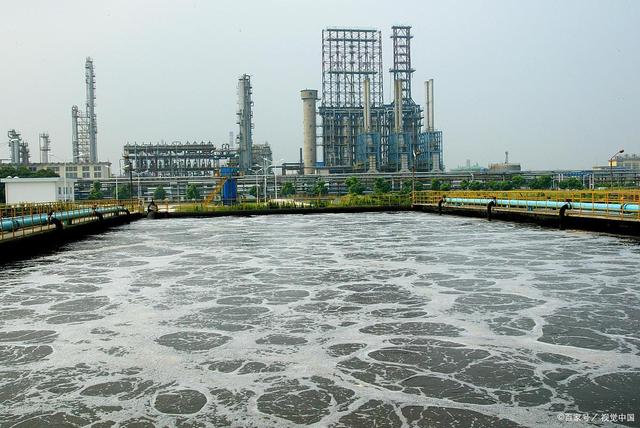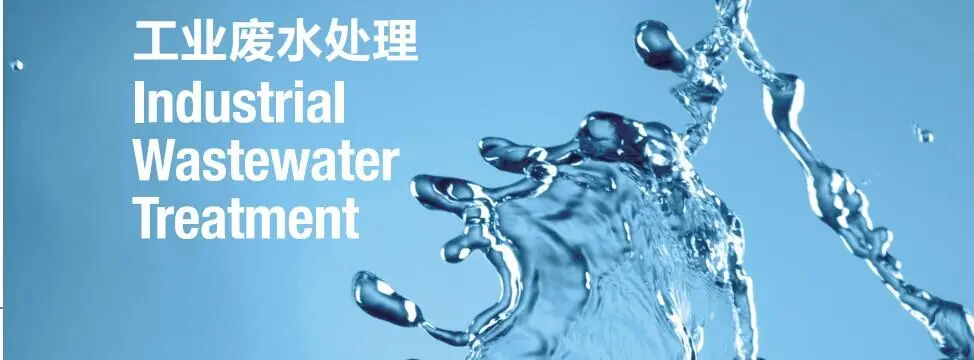One of the most common by-products of industrial or commercial activities is industrial wastewater, which is the water used to make commercial products in nearly all phases of production across all industries. When this process water is used, it is considered waste and must be treated before it can be discharged.

What is Industrial Wastewater?
Industrial wastewater is not only a by-product of oil and gas, mining, and chemical manufacturing companies, but it is also a by-product of food and beverage processing industries, which are essential in the production of the clothes on your back, shoes on your feet, computer at your fingertips, and car you drive.
Any organic and inorganic pollutants to water used during industrial production must be managed in order to comply with existing laws. Before wastewater can be safely discharged back to land, into bodies of water, or reused in plant operations, organic matter, metals, and other contaminants must be removed.

What Industries Produce Industrial Wastewater?
Here are a few examples.
Water/wastewater treatment plants
Ironically, a byproduct of wastewater treatment plants is the generation of wastes containing many potential contaminants. Even reclaimed water disinfected with chlorine may contain disinfectant byproducts such as trihalomethanes and haloacetic acid. Solid residues from wastewater treatment plants, called biosolids, contain common fertilizers, but may also contain heavy metals and synthetic organic compounds from household products.
Metal finishing plants
Metal finishing operations generate waste that is typically slurry (sludge) containing metals dissolved in liquids. Metal plating, metal finishing and printed circuit board (PCB) manufacturing operations generate large quantities of sludges containing metal hydroxides such as iron hydroxide, magnesium hydroxide, nickel hydroxide, zinc hydroxide, copper hydroxide and aluminum hydroxide. Metal finishing wastewater must be treated to comply with all applicable regulations because of the environmental and human/animal impacts of these wastes.
Mining Industry
Mine tailings are a mixture of water and finely ground rock that is left behind after mineral concentrates, such as gold or silver, are removed from mining operations. Effective disposal of mine tailings is a key challenge for mining companies. Tailings represent an environmental liability, as well as a significant cost challenge and opportunity to reduce transportation and disposal costs. Proper treatment solutions can eliminate the need for tailings ponds altogether.
Steel/Iron Production
The water used in steel production is used for cooling and by-product separation. It can become contaminated with products such as ammonia and cyanide during the initial conversion process. Waste streams include benzene, naphthalene, anthracene, phenol and cresol. Forming iron and steel into plate, wire or bar requires water as a base lubricant and coolant, as well as hydraulic fluid, tallow and granular solids. Water for galvanized steel requires hydrochloric and sulfuric acid. Wastewater includes acidic rinse water and waste acids. Many steel industry wastewaters are contaminated with hydraulic fluid, also known as soluble oil.
Industrial laundries
The commercial textile service industry handles approximately 15 billion pounds of laundry each year. The wastewater generated from these uniforms, towels, mats, etc. is full of grease, lint, sand, grit, heavy metals and VOCs and must be treated prior to discharge.
Chemical manufacturing
The chemical industry faces significant environmental regulatory challenges in dealing with its wastewater discharges. Discharges from petroleum refineries and petrochemical plants include conventional pollutants such as oil and grease and suspended solids, as well as ammonia, chromium, phenol and sulfides.
Oil and gas fracturing
Wastewater from shale gas drilling is considered a hazardous waste. It is highly saline, with a sodium content of 32,300 milligrams per liter. In addition, water mixed with industrial chemicals injected into the well to facilitate drilling contains high concentrations of sodium, magnesium, iron, barium, strontium, manganese, methanol, chlorine, sulfate and other substances. During the drilling process, naturally occurring radioactive materials are returned to the surface with the water (known in the industry as “NORM”). The water used for fracturing may also contain hydrocarbons, including toxic substances such as benzene, toluene, ethylbenzene and xylene that may be released during the drilling process.
Power Plants
Fossil fuel-fired power plants, particularly coal-fired power plants, are a major source of industrial wastewater. Many of these plants discharge wastewater containing high levels of metals such as lead, mercury, cadmium and chromium, as well as arsenic, selenium and nitrogen compounds (nitrates and nitrites). Plants with air pollution controls, such as wet scrubbers, often transfer captured pollutants to the wastewater stream.
Food processing
The concentrations of pesticides, insecticides, animal manure and fertilizers in food and agricultural wastewater need to be managed. The processing of food from raw materials fills water bodies with high loads of particulate matter and soluble organic runoff or chemicals. Organic waste from animal slaughter and processing, body fluids, intestinal material and blood are all sources of water contaminants that need to be treated.
How to Easily manage Industrial Wastewater
Filter presses are an important part of the on-site solution for treating industrial wastewater and effluent wastewater in a variety of industries, just to name a few. There are numerous industrial uses for filter presses in wastewater treatment. Manufacturers can efficiently and effectively dewater their sludge in accordance with EPA, state, and local regulations by utilizing advanced industrial filter press technology. Filter presses, as well as filter plates and filter cloth, can be tailored to specific industrial requirements, and proper selection is critical to optimizing press operations and obtaining good, dry filter cakes for cost-effective disposal. Manufacturing companies can achieve their wastewater objectives, such as minimizing environmental impact and reusing/conserving precious water resources, with a properly designed and engineered filter press system.